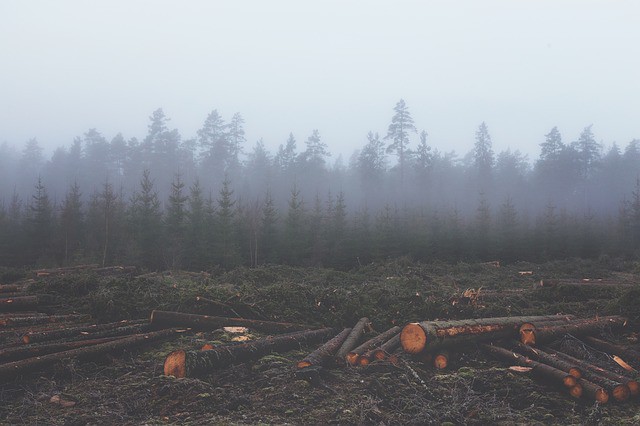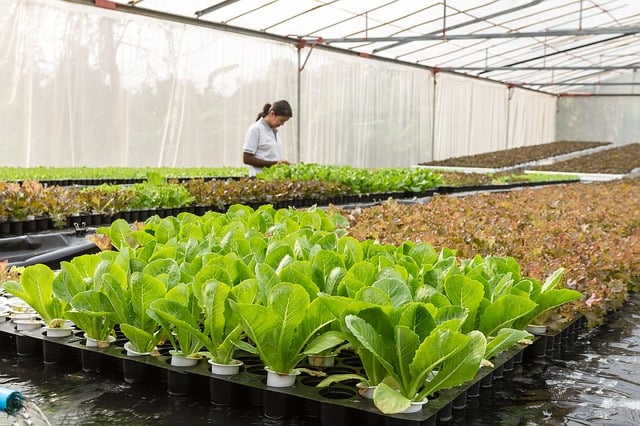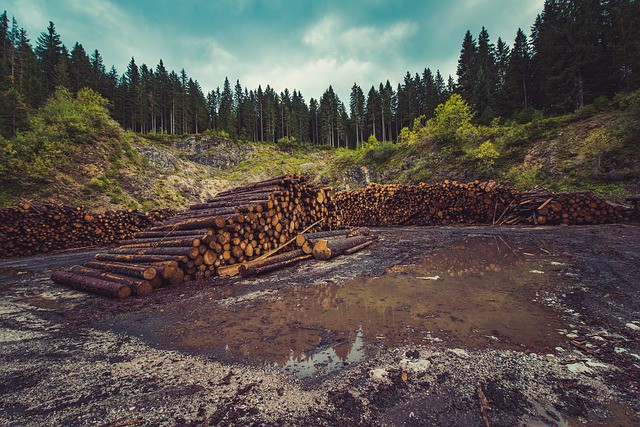Desert Biome: Climate, Precipitation, Location, Seasons, Plants, Animals

Deserts are some of the most widespread yet unexplored biomes. They cover about 1/3 of the earth’s surface and are found in 60 of the world’s nations. The largest hot desert biome (the subtropical Sahara) stretches over 3.5 million square miles or 9 million square kilometers. However, the Antarctica, which is a polar desert, is the largest desert overall. Many people assume that deserts cannot support any form of life, but they actually harbor about 4,000 different plants and animal species. Since desert biomes receive little precipitation per year, the conditions are very hostile for plants and animals.
A desert biome is a collection of habitats that that develop in arid (dry) environments as a result of little rainfall (50cms per year) or no rainfall at all. Desert biomes are classified into four, with each having their own unique features, but have great similarity regarding living and nonliving composition. They include hot and dry deserts, semi-arid deserts, coastal deserts and cold deserts. In the midst of these 4 desserts exists numerous deserts in many areas across the globe.
Climate
Due to the availability of little moisture in the air to capture and hold on to the heat emanating from the high temperatures during the day, desert nights are typically cold. A combination of extreme temperature fluctuations and incredibly low levels of water makes the desert biome a very harsh land mass to live in.
Temperatures are so extreme during the day because there is very little moisture in the atmosphere to block out the sun’s rays. This means that the sun’s energy is absorbed on the ground surface. The ground surface then heats up the surrounding air.
When night falls, the exact opposite happens. The heated ground, plus the hot air, radiates the heat absorbed during the day back to the atmosphere, triggering rapid drop in temperatures. Temperatures at night can plummet to zero degrees Celsius.
Precipitation
Precipitation in hot and dry deserts is a lot different from precipitation in cold deserts. Hot and cold deserts typically receive very little rainfall, an average of 15 cm per year. Cold deserts, on the other hand, experience a lot of snow and receive rain in spring, an average of 15-26 cm, to be exact.
Location
Most deserts occur far away from the coasts, in locations where moisture emanating from the oceans and seas hardly reaches. However, some deserts are situated on the west coast of some continents like the Atacama in Chile and Namibia in Africa, culminating in coastal fog deserts whose aridity is caused by cold ocean currents.
The desert biomes of the world are located in six biogeographic domains including:
The Australian deserts
The Australian deserts consist of a collection of lowlands arid eco-regions in the heartland of Australia. They are hardly inhabited, and their average population density is lower than one person per square kilometer. Of all the deserts in the world, Australian deserts have the lowest human population, by far.
Afrotropic deserts
These desert biomes are located in Sub-Saharan Africa, including the southern fringe of the Arabian Peninsula. The biome receives a lot of pressure from humans, particularly in Madagascar and the horn of Africa.
The Indo-Malay region
The Indo-Malay region consists of 2 hot lowlands including the Indus Valley and the Thar. These deserts top the world deserts regarding human footprint.
The Neotropic deserts
Those located in South America cover an area of about 684, 000 million square miles. However, only 6 percent of this total area is protected.
The Nearctic deserts
These deserts cover an estimated area of 1.04 million square miles in North America. Due to the expansion of urban corporations like Phoenix in the U.S., their average population is relatively high.
Palearctic domain
This domain concentrates the largest range of desserts in the entire world, covering an area of a staggering 9.9 million square miles. That’s, essentially, 63% of all deserts in the world. These deserts are famous for their extreme dryness and sheer inaccessibility. The Sahara desert in Africa covers an area of about 9.9 square miles or approximately 10% of the African continent. On the flip side, the deserts located in the Central area are characterized by folded mountains, high landscape heterogeneity, as well as enclosed basins.
Seasons
Seasonal climate varies considerably in desert biomes. In the summer months, temperature ranges between 30 to 49 degrees Celsius. Little or zero precipitation occurs in the summer. Also, the rate of evaporation typically overtakes precipitation.
In the winter months, temperatures range between 10 to 20 degrees Celsius. A lot of the precipitation takes place during these summer months.
Plants
When we talk about a desert biome, sand, heat or Gila monsters springs to the mind. When the topic of desert biome plants comes up, Cactus is the plant that comes first in mind, since it’s the most memorable feature of a desert. The very little rainfall experienced in desert biomes, as well as extreme daily temperature fluctuations, makes life difficult for plants. In spite of these challenges, a wide range of plants grows in this biome. The most common plants that thrive in desert biomes include Cacti, small shrubs, succulents, and grasses.
To thrive in these harsh climatic conditions, desert plants have developed unique adaptations. Common adaptations include water storage in stems and leaves, waxy coverings on leaves, shedding leaves, all to minimize water loss. Some have developed long taps roots to be able to reach water tables. Others become dormant until the rains return.
The cactus plant, particularly, has adapted well to the harsh climatic conditions of desert biomes such that it’s able to grow up to 20 feet or more and liver for over 200 years. The Giant Saguaro cactus, in particular, has managed to thrive in this harsh biome due to shallow roots, which enables it to soak up rain and dew before it evaporates. It also features a spongy interior, which has the ability to expand and hold a lot of water. Another adaptation of the cactus is that it grows slowly to save energy.
The Mugma Tree is another plant adapted to live in desert biomes. It consists of small leaves that uniquely grow upwards and act as funnel when it rains. The funnel-like leaves direct the rain water to the base of the tree, where it’s soaked up by shallow roots. Generally, this adaptation guarantees that the tree will get a lot of water when rain falls. Other plants of the desert biome include Brittle Bush, Desert Ironwood, Chainfruit Cholla, Joshua Tree, Palo Verde, Jumping Cholla, Ocotillo, Pancake Prickly Pear Cactus, Soaptree Yucca and Mojave Aster.
Animals
In spite of the harsh climatic conditions in the desert biome, many animals live here. These animals have developed unique adaptations to help them keep cool and use less water. For example, a recognizable desert animal like the Camel can get by for days without food and water due to the fat stored in its hump. It also has thick fur and underwool to protect it from the harshest of winter. Its nostrils are able to be closed to keep out blowing sand.
A camel has two rows of eyelashes to shield it eyes from the sun and blowing winds and broad hooves to prevent it from sinking in the sand. Foxes survive here due to their burrowing and nocturnal lifestyles. This burrowing ensures they escape the intense heat during the day. They also have large ears to aid in the dissipation of excess body heat during hot days. Their thick, sandy fur helps protect them from the cold nights in the desert. The thick, sandy fur also helps reflect heat and for camouflage.
Animals in desert biomes have also developed adaptations such as panting to minimize heat, seasonal migration, and long periods of dormancy that lasts until triggered by moisture and temperature conditions. Other animals in the desert biome include Bobcats, Coyotes, Javelina, Desert Tortoise, Cactus Wren, Desert Kangaroo Rat, Sonoran Desert Toad, Thorny Devil, Desert Bighorn Ship, Armadillo Lizard, Sonoran Pronghorn Antelope, and so on.






